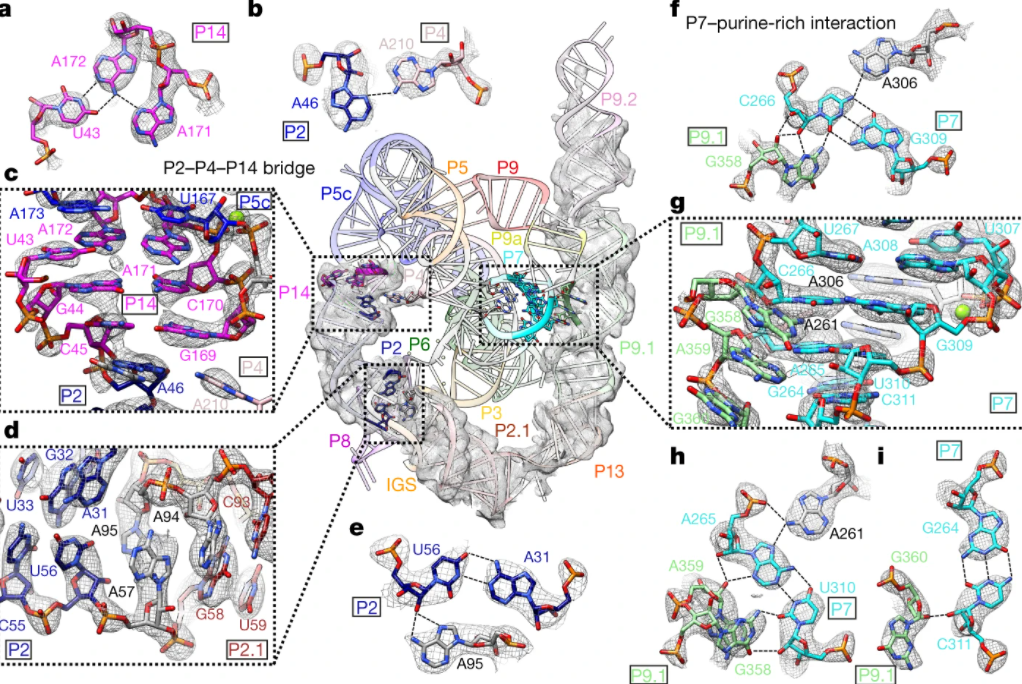
On Aug. 11, 2021, Professor Su Zhaoming and his team from the State Key Laboratory of Biotherapy, published their research titled “Cryo-EM Structures of Full-Length Tetrahymena Ribozyme at 3.1 Å Resolution” in Nature online. This project is in collaboration with the team of Wah Chiu and Rhiju Das from Stanford University. In this study, high-resolution structures of full-length Tetrahymena ribozyme in substrate-free state (apo) and substrate-bound state (holo) were determined for the first time using single-particle cryo-electron microscopy.
RNA has important biological functions, and many non-coding RNAs can be folded into complex three-dimensional structures to involve in important life processes, such as catalysis, transcription and translational regulation. However, due to lack of information on the three-dimensional structure of RNA, the understanding of the relationship between the three-dimensional structure and function of RNA remains limited. Cryo-electron microscopy has become an indispensable technology for analyzing macromolecular structures. However, due to the strong heterogeneity of the RNA structure itself, it remains a great challenge for obtaining the high-resolution structure of pure RNA by means of cryo-electron microscopy. Previously, there were less than 10 pure RNA structures with the resolution superior to 5 Å in the electron microscope database, with the highest resolution at 3.7 Å.
Tetrahymena group I self-splicing intron, discovered by American scientist Tom Cech, was the first RNA that has enzymatic activity without the involvement of protein. It was later termed “ribozyme”, which led to the Nobel Prize in Chemistry in 1989. The core region P3-P9 of Tetrahymena ribozyme has a very compact three-dimensional structure to form enzyme catalytic sites, which has also become an important model for studying the relationship between RNA’s three-dimensional structure and its catalytic functions.
"Although Tom Cech previously analyzed the crystal structure of P3-P9 region at 3.8 Å resolution, the complete full-length structure, including the peripheral region, remains unknown, which greatly limits our understanding of the structural mechanism of how the peripheral region of Tetrahymena ribozyme allosterically regulates ribozyme activity. In addition, the resolution of 3.8 Å is not enough to identify many key metal ions involved in catalytic reactions." Professor Su Zhaoming noted, "Therefore, it’s particularly important to analyze the complete structure of tetrahymena ribozyme in studying its structure-function relationship, and it also provides an important reference in studying the structure and function of other RNAs by means of cryo-electron microscopy."